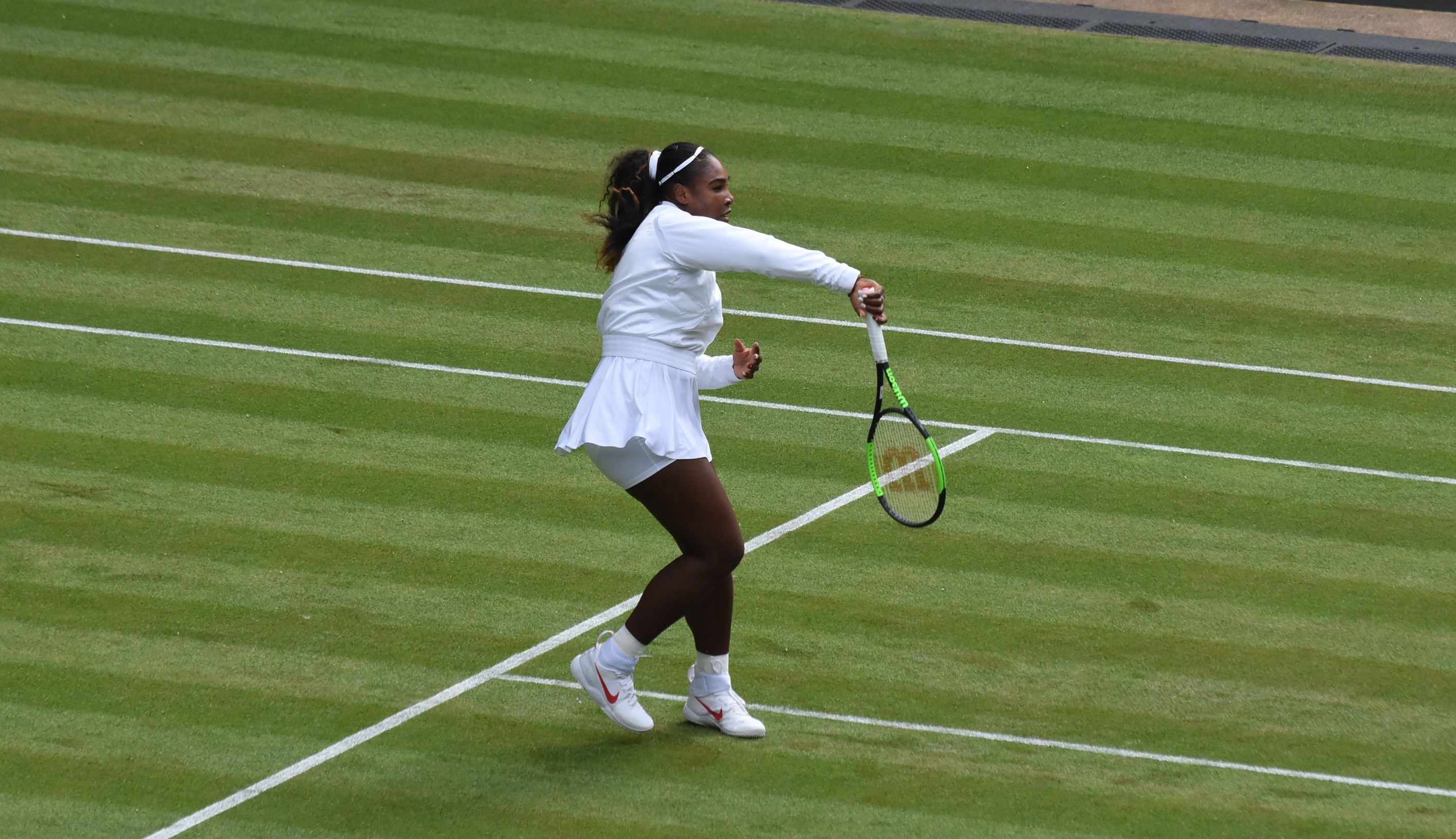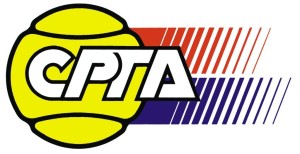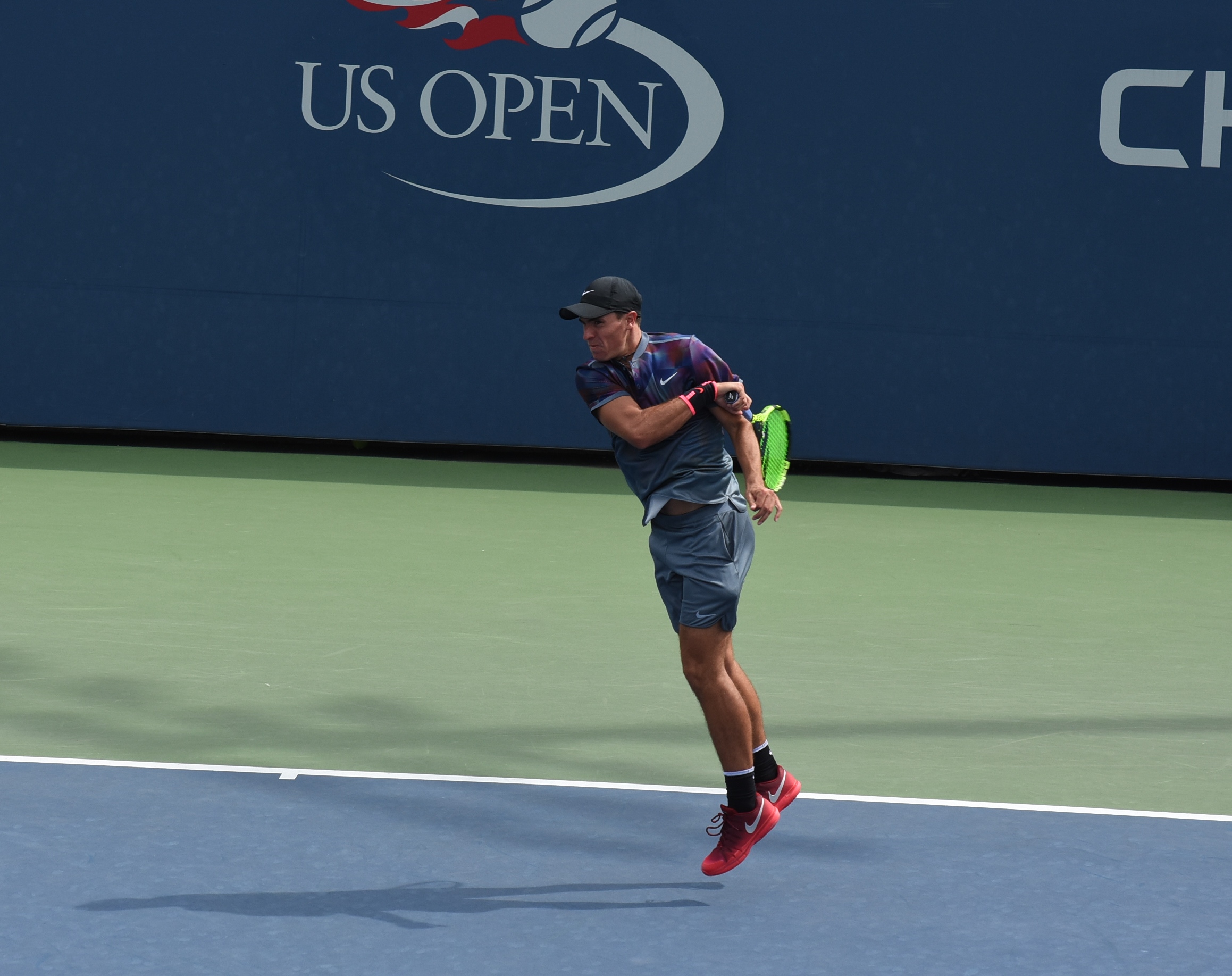
Serena Williams – Overhead 3.0
In general, the biggest difference from the service action is that while playing the overhead most of the players are using for the racket take-back the faster upper loop. The time-efficient preparation for the overhead consists of three actions ("triple overhead action") being taken almost simultaneously, immediately after a quick initial change of the grip into the backhand/continental position - 1/ pointing at the incoming high ball (lob) with the non-dominant hand, 2/ pivot while stepping back and slightly around with the dominant-side leg/foot and....




